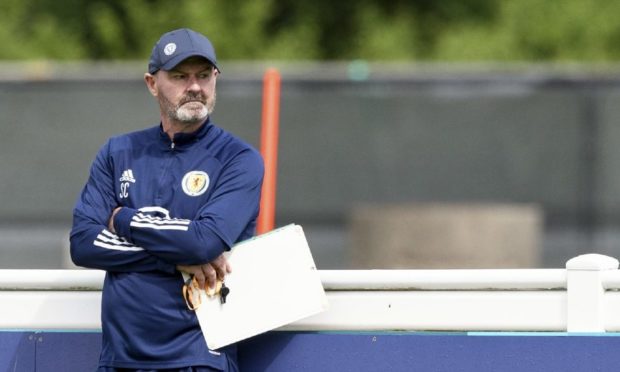Nobody does a lurch quite like the Scots.
Test the Euro 2020 temperature of the nation on Monday morning and you’d find it somewhere between Craig Brown’s ‘we can win the thing’ and a larger consensus of progression to the last-16 being a perfectly reasonable and logical expectation.
Test it again late on Monday afternoon and you’d get a landslide victory for ‘same old story, we’ve nae chance now’. Nobody does fatalism quite like the Scots either.
Defeat to the Czech Republic was a pretty soul-destroying experience both inside Hampden Park and across the country.
Of Scotland’s nine opening games in World Cups and European Championships, only the infamous ’78 losses to Peru in Argentina and Costa Rica at Italia ’90 stung and shocked more.
Emotional lurches are to be expected, especially when the build-up to the big return has been so long and the anticipation so acute.
But a tactical lurch in the middle of a three-game group campaign would be ill-judged, despite the temptation.
Force of will seemed to be the best plan to dig the team out of its hole against the Czechs.
It didn’t work.
And there is little or no chance of it working at Wembley either.
There are key changes Steve Clarke can make to his starting line-up. In a couple of cases at least, you can upgrade that to key changes he MUST make.
Stephen O’Donnell needs to be taken out of the line of fire and Che Adams has to play.
But as instinctive as it is to think of this match as an international derby and an opportunity to harness passion and heart to get the show back on the road, it really isn’t.
Just because England toiled and appeared to run out of ideas against Croatia, and because their centre-halves are some way short of world class, does not make this a contest of equals or near equals.
It isn’t a mismatch but it’s the World Cup semi-finalists and second favourites to win this tournament against a team which is the lowest-ranked in the group and only qualified through the back door.
Gung-ho would be folly
Apart from Andy Robertson or Kieran Tierney – Scott McTominay at a real push – nobody in the Scotland squad would make Gareth Southgate’s 26-man pool let alone threaten his starting 11.
The inevitable consequence of getting gung-ho and pouring men forward will be England picking their opponents apart, putting the game to bed early and ending any hope of the Scots’ goal difference giving them a chance of going deeper into the competition as one of the four best third-placed nations.
Clarke might not have the sarcasm of Gordon Strachan or come away with the ill-judged foot-in-mouth comments but he is cut from the same coaching cloth.
Both are at their best when they put a regimented set-up into practice against a team of greater quality, drill them to within an inch of their lives and prepare them to pounce when those ‘moments’ managers are so fond of telling us about present themselves.
It happened for Strachan at Hampden in 2017.
That day England had over 60% possession, twice as many shots and three times as many on target.
Just being 1-0 down going into the closing stages at Wembley would represent success for Clarke four years later.
This team might not have a free-kick specialist of the quality of Leigh Griffiths to cash-in on end-of-game dead-ball opportunities but it has more quality in midfield and up front to capitalise on the type of anxiety or complacency that often creeps in no matter how well the side leading narrowly has played.
Caution could prove useful
To be in that position Scotland’s back three (effectively a back five) will need to keep its shape under intense pressure, probably with Jack Grealish’s guile the biggest danger rather than Raheem Sterling’s pace.
The team will need a midfielder on the pitch who can relieve pressure and get it up-field, preferably Billy Gilmour but, if not him, then Callum McGregor.
And it will need Adams’ reliable close control and someone with speed of thought close by.
But, if he isn’t spooked into making one of those lurches, it could now serve him well.
A bit like Micky Mellon at Dundee United, you get the feeling that Clarke would take a 0-0 draw in a larger percentage of games than he probably should.
That’s definitely a cap that fits in London.
